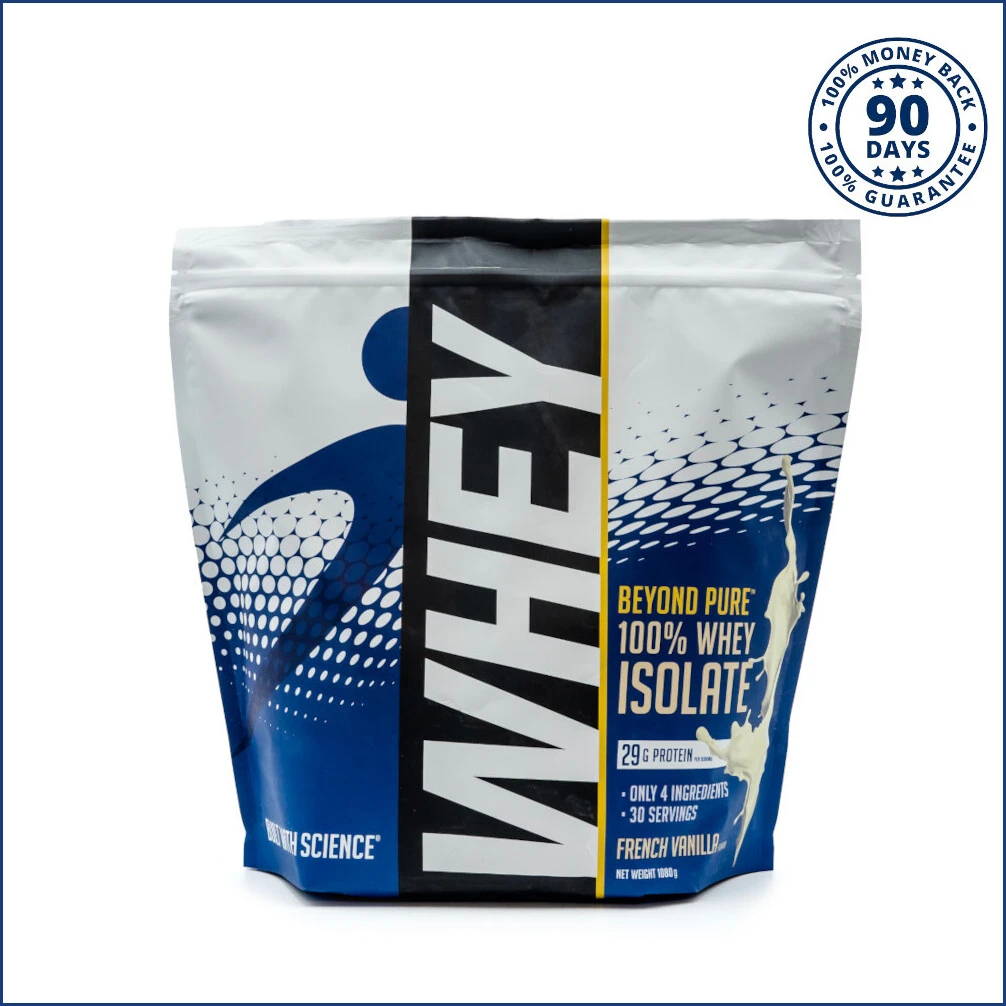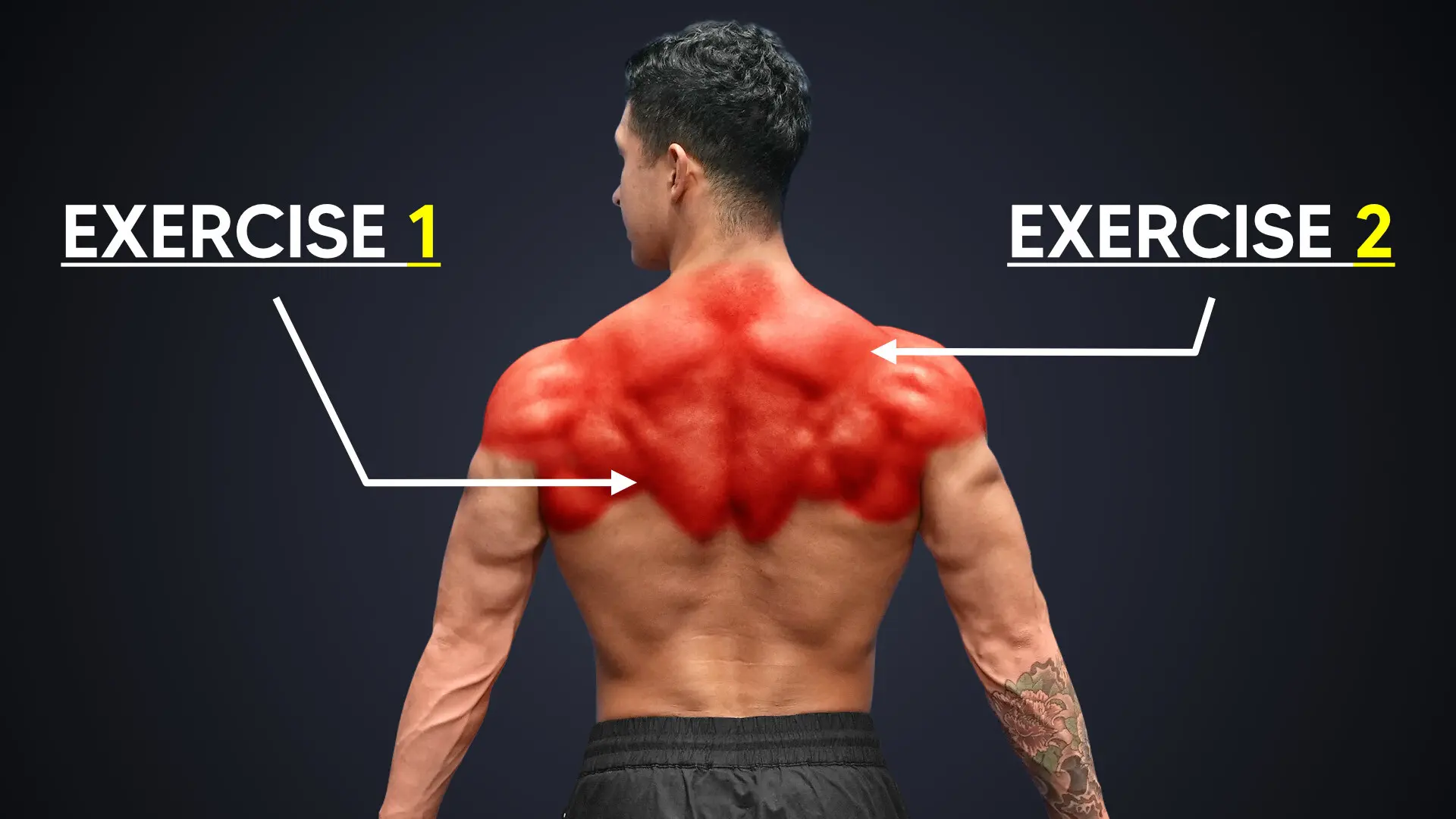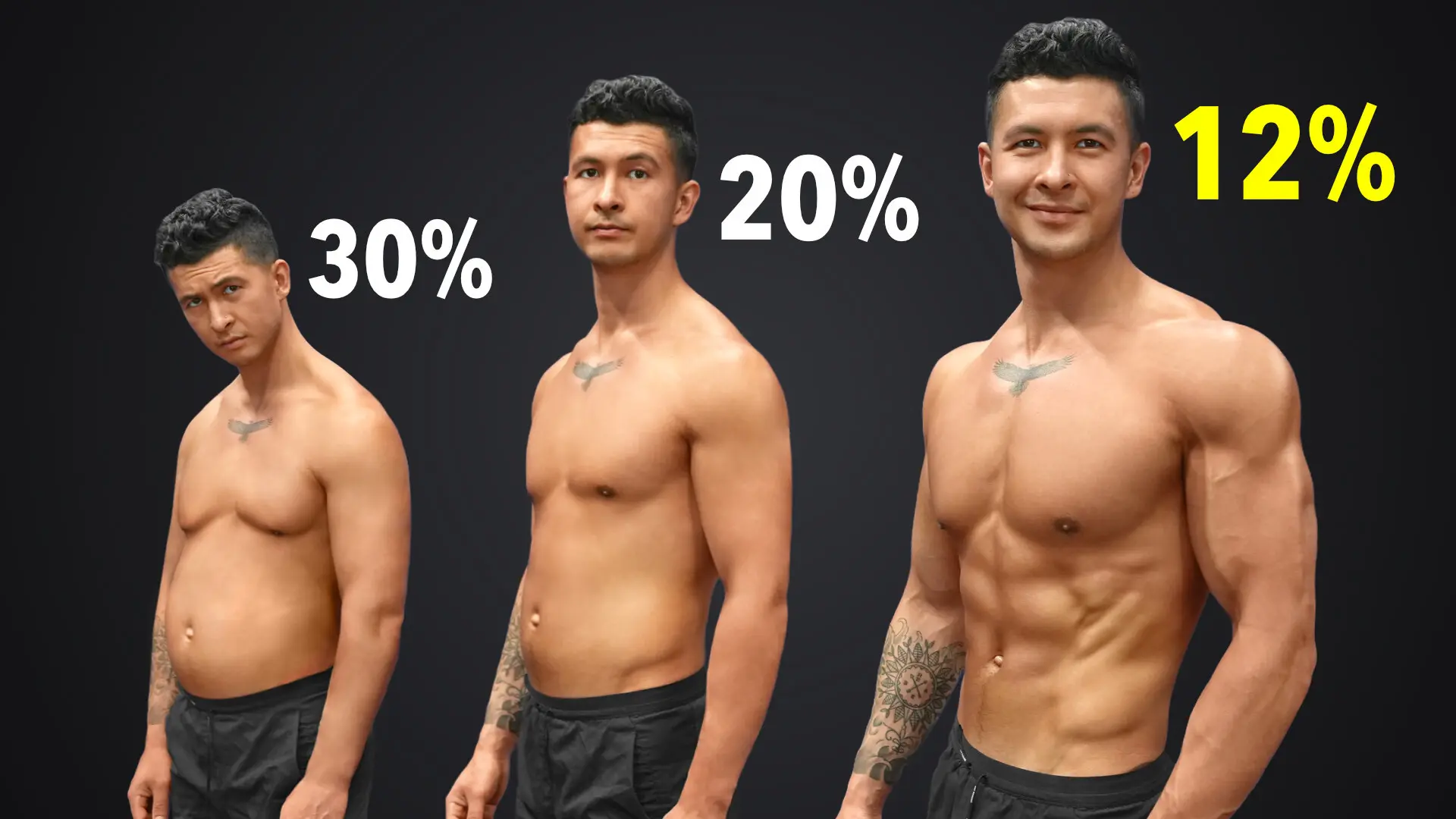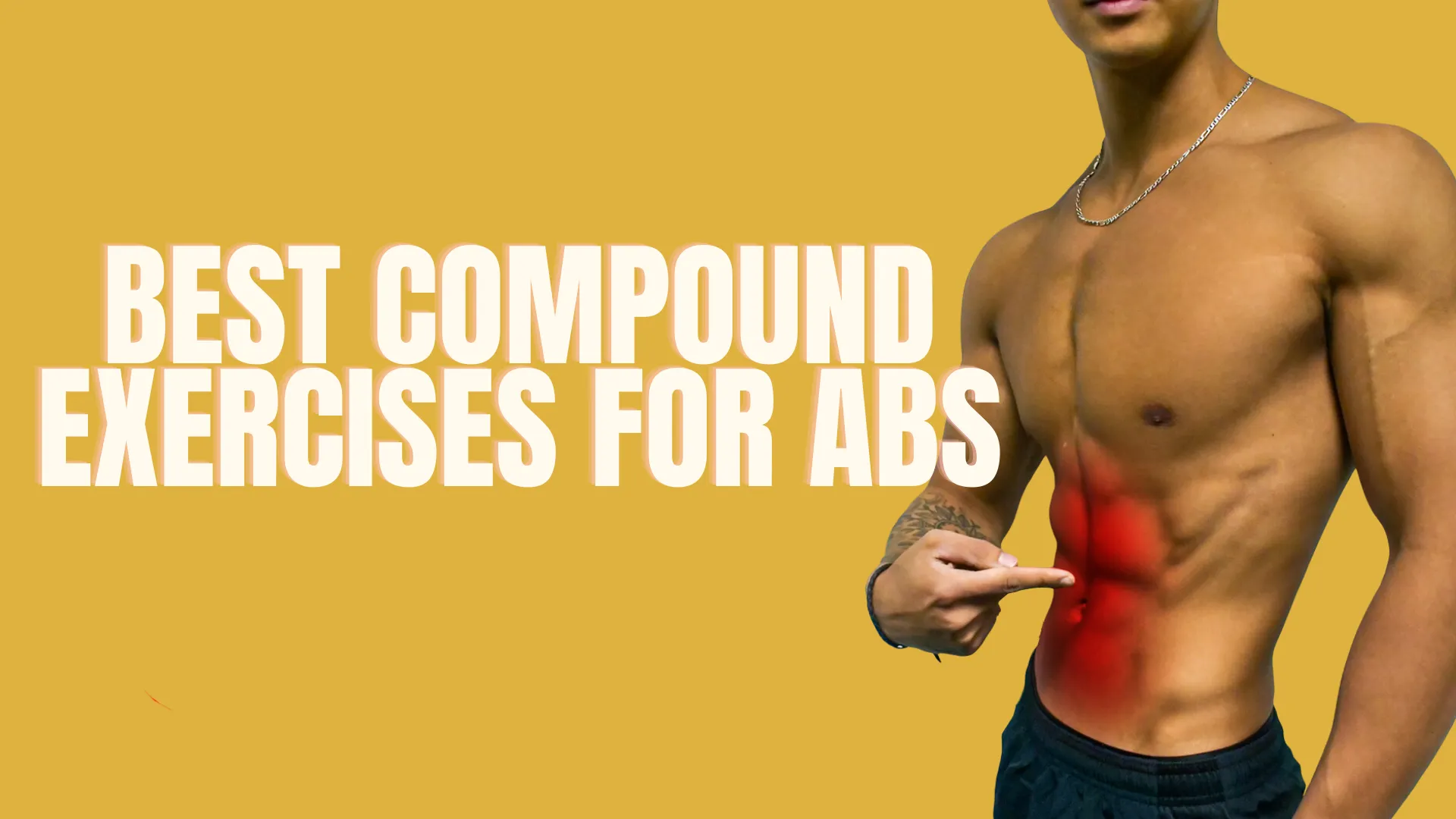
Compound Exercises For Abs | Built With Science
What Are The Best Compound Exercises For Abs?
Just so you know, the “secret” to chocolate-bar-like abs isn’t doing more heavy compound movements like your squats and deadlifts.
As surprising as this may be to hear, these don’t do a good job of activating (and, thus, growing) your abs at all. Case in point: this study that was published in The Journal of Strength and Conditioning Research.
The researchers found that the squats and deadlifts elicited comparably high levels of activation in the posterior core muscles (i.e., back extensors) when compared to other exercises that target the posterior core muscles.
But when it came to the anterior core muscles — namely, the abs?
Those exercises (i.e., your squats and deadlifts) didn’t even come close to eliciting the levels of abs activation that the bodyweight push-up did.
So, if heavy compound exercises are not the answer, what is?
There are 2 things you need to do.
The first is to add mass to your abs; this will help them "pop" against the connective tissue bands, creating well-defined, drool-worthy lines. How? In short, you'll have to treat them like any other muscle group:
- Working them at least 2-3 times weekly
- Applying progressive overload for continued growth
- Using the right exercises to develop them (which is what this article is for)
And as for the remaining thing? Well, I’ll get to that after showing you the 4 best compound exercises for abs you could do.
#1: Weighted Cable Crunch
Equipment needed: Cable machine
Preferentially targets: Upper abs
First, some background information. In anatomical terms, what you think of as your "abs" is called the rectus abdominus, which further divides into:
- Upper abs
- Lower abs
Turns out, each of those regions is innervated by different nerves — meaning you could selectively activate either by manipulating your exercise selection. More specifically, previous EMG studies (e.g., this 2000 study and Bret Contreras’ analyses) suggest that you could preferentially activate your:
- Upper abs: With “top-down” movements, where you bring your shoulders towards your hips, and
- Lower abs: With “bottom-up” movements, where you bring your hips toward your shoulders
So, with that in mind, the weighted cable crunch is one of the best compound exercises you could do for your upper abs. To prevent your hip flexors from taking over the movement and stealing your gains:
- Don’t ego lift; choose a lighter weight you can control (instead of using momentum)
- Keep your hips locked throughout the movement, with your knees bent roughly 90 degrees
- Focus on bringing your rib cage forward and down towards your pelvis through spine flexion
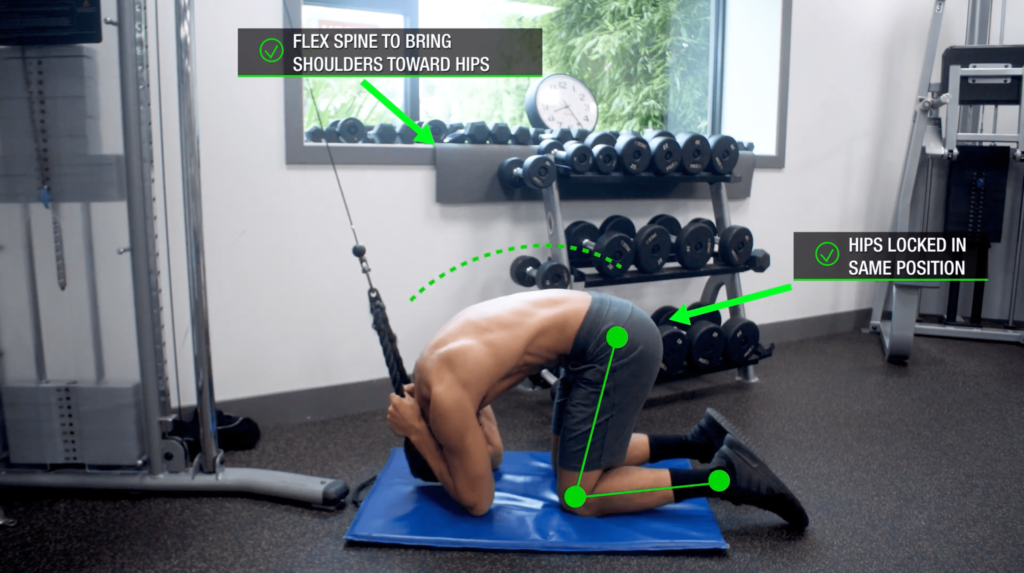
#2: Hanging Leg Raises
Equipment needed: Pull-up bar (or anywhere you can safely hang and perform the exercise, like a squat rack)
Preferentially targets: Lower abs
OK, so your upper abs are covered with the weighted cable crunch.
It’s time for your lower abs. And for that, we’ll use arguably the best “bottom-up” compound exercise for the lower abs around (at least, purely from an EMG activation viewpoint): the hanging leg raises.
Once again, though, you'll have to pay attention to your form to get the most out of this exercise:
Start by hanging on to a bar
- Move into a posterior pelvic tilt (think of your hips as a bowl of water; most people are stuck in an anterior pelvic tilt where the water tips over the front of the bowl — you want to contract your glutes and abs, so the bowl becomes flat instead)
- Think about raising the pelvis and curving it toward the belly button as much as your ab strength allows (your legs will naturally be brought up as a result)

If this movement is too challenging, you can regress by starting with lying leg raises on the floor, then performing hanging leg raises with bent knees. But if you can easily rep out 15+ hanging leg raises? Load the movement with a dumbbell or medicine ball.
#3: Bicycle Crunches
Equipment needed: N/A
Preferentially targets: Upper and lower abs (bonus: obliques)
Bicycle crunches: a “top-down” or “bottom-up” movement? Well, it’s both.
That means it works the upper and lower abs in one fell swoop, truly deserving of its title as one of the best compound exercises for abs.
Beyond activating the rectus abdominus well, bicycle crunches are also great at activating your obliques, important muscle groups that run down the sides of your abs to visually taper and narrow your waistline. We’ll talk more about the importance of obliques — and other “supporting muscles” for the abs — in a bit.
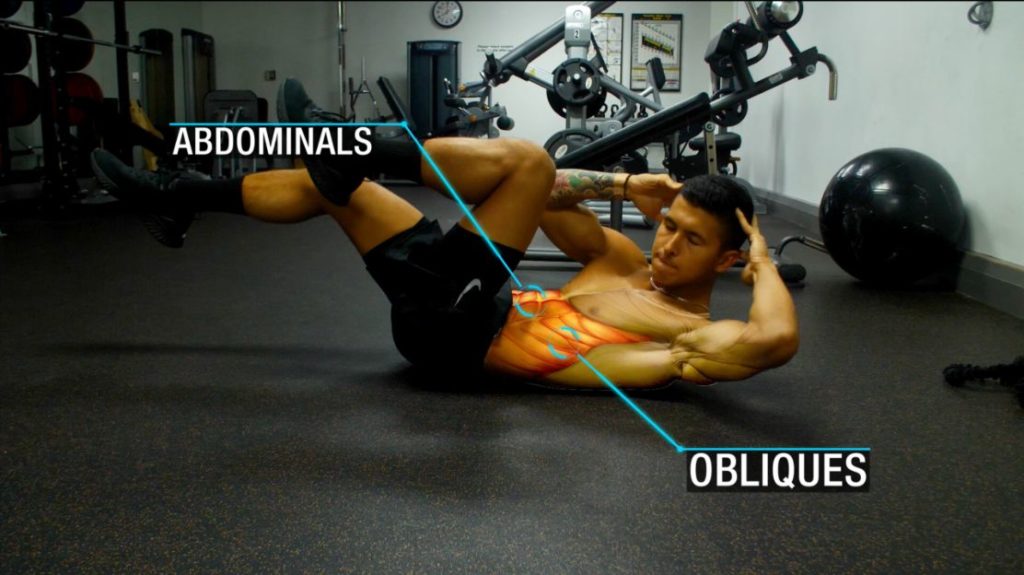
For now, here are a few execution tips for the bicycle crunches:
- Lay on the ground and move into posterior pelvic tilt (your lower back should be flattened against the ground)
- Focus on simply crunching to 1 side while rotating your torso instead of fixating on touching your elbows to your knees
#4: Ab Rollout
Equipment needed: Ab wheel
Preferentially targets: Lower abs and obliques
While it isn’t technically a “bottom-up” movement, various EMG analyses (e.g., this 2006 study) have surprisingly shown the ab rollout to be one of the best lower ab exercises.
As with all the previous compound exercises for abs, though … execution is key.
- Get into the starting position by holding the ab wheel and moving into a posterior pelvic tilt
- Maintain this position with your abs contracted as you begin to roll out; go only as far as you can without arching your lower back
- Maintain the posterior pelvic tilt and “pull-up” with your mid-section to roll back in

Psst: don’t have access to an ab wheel? I cover how you can do the ab rollout (and a few other ab exercises) using just your body weight here.
Sample Workout Routine Using Those Compound Exercises For Abs
Hanging Leg Raises (3 sets, 10 to 15 reps)
Weighted Cable Crunch (3 sets, 10 to 15 reps)
Bicycle Crunches (3 sets, 20 to 30 reps)
You Also Need This To Get Your Abs To Show
The last thing you need to reveal your abs? It’s a low enough body fat percentage. As mentioned in my “six-pack abs workout” article, this would be:
- 10-12% body fat for men
- 14-18% body fat for women
But how do you get there? Well, it's about optimizing your diet and tweaking your lifestyle habits (FYI: this is the easiest and most underrated fat loss exercise ever).
For more actionable tips, I highly encourage you to check out this article, where I spoke to 5 of the most qualified fat loss experts for their advice on losing belly fat (or any excess fat in general). Within, you'll find a valuable nutrition framework that'll teach you how to sustainably create a calorie deficit using the foods you'd actually eat. And more.
Seriously, check it out.
Know The Difference Between Your Abs And Core
After all that, your abs may look nice … but are they functional?
Will they help improve your ability to get stronger on all the “big movements”, like the barbell back squat, deadlift, and barbell overhead press?
Probably not. And that's because training your abs with a tunnel vision — i.e., only training your upper and lower abs — leaves the rest of your core on the back burner. Wait. Aren't "abs" the same thing as "core"? They're not.
Learn the difference between your abs and core here.
Ultimately, my point is this: while training purely for aesthetics isn't necessarily wrong, it often hurts your progress and sets you up for injuries in the long term. You should also structure your workout sessions with functionality in mind.
And for a science-based, step-by-step program that shows you exactly how to train in a well-rounded, sustainable way — while achieving your aesthetic goals, including those chocolate-bar-like abs — take our free analysis quiz below:
Click the button below to take my analysis quiz to discover the best program for you:
↓

